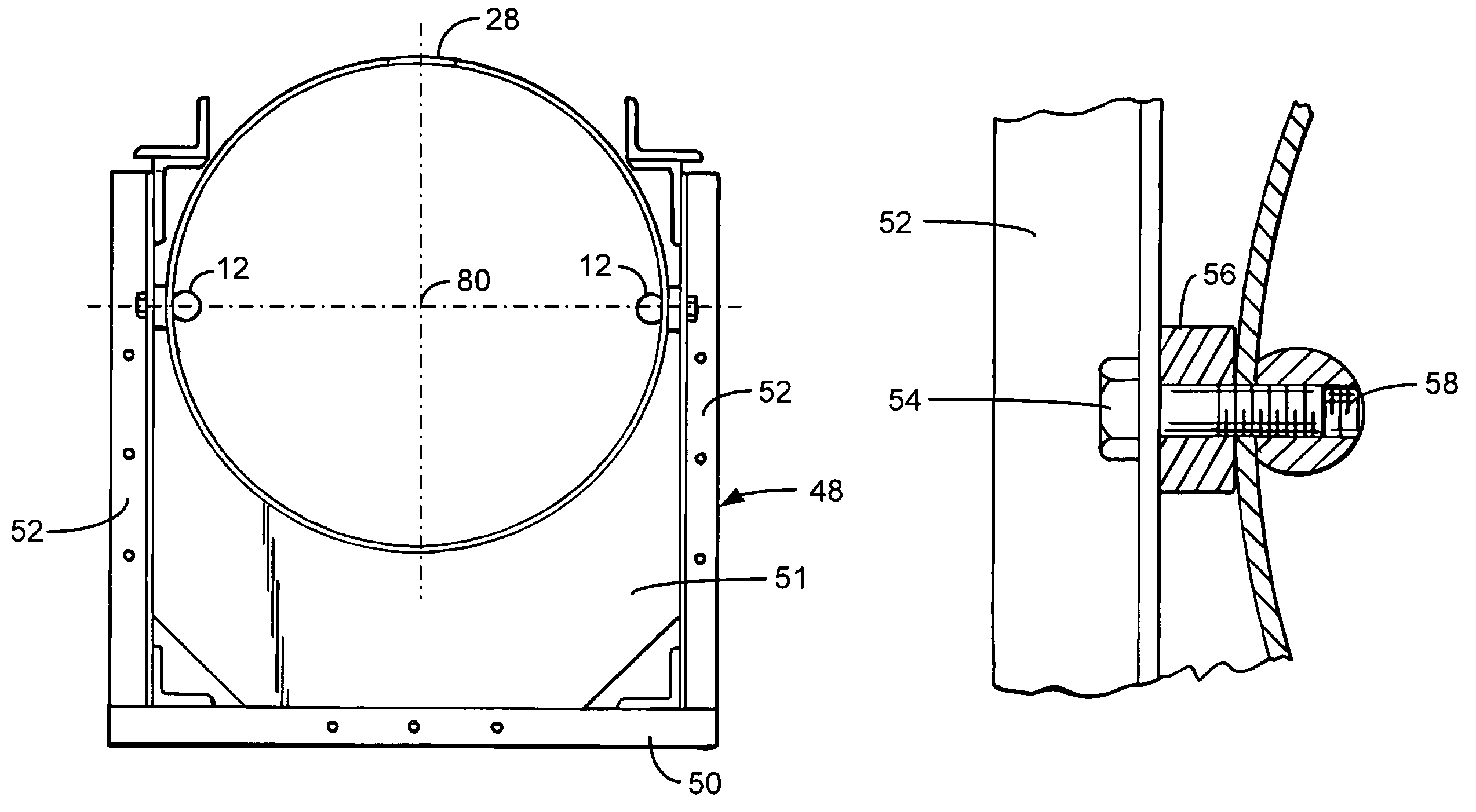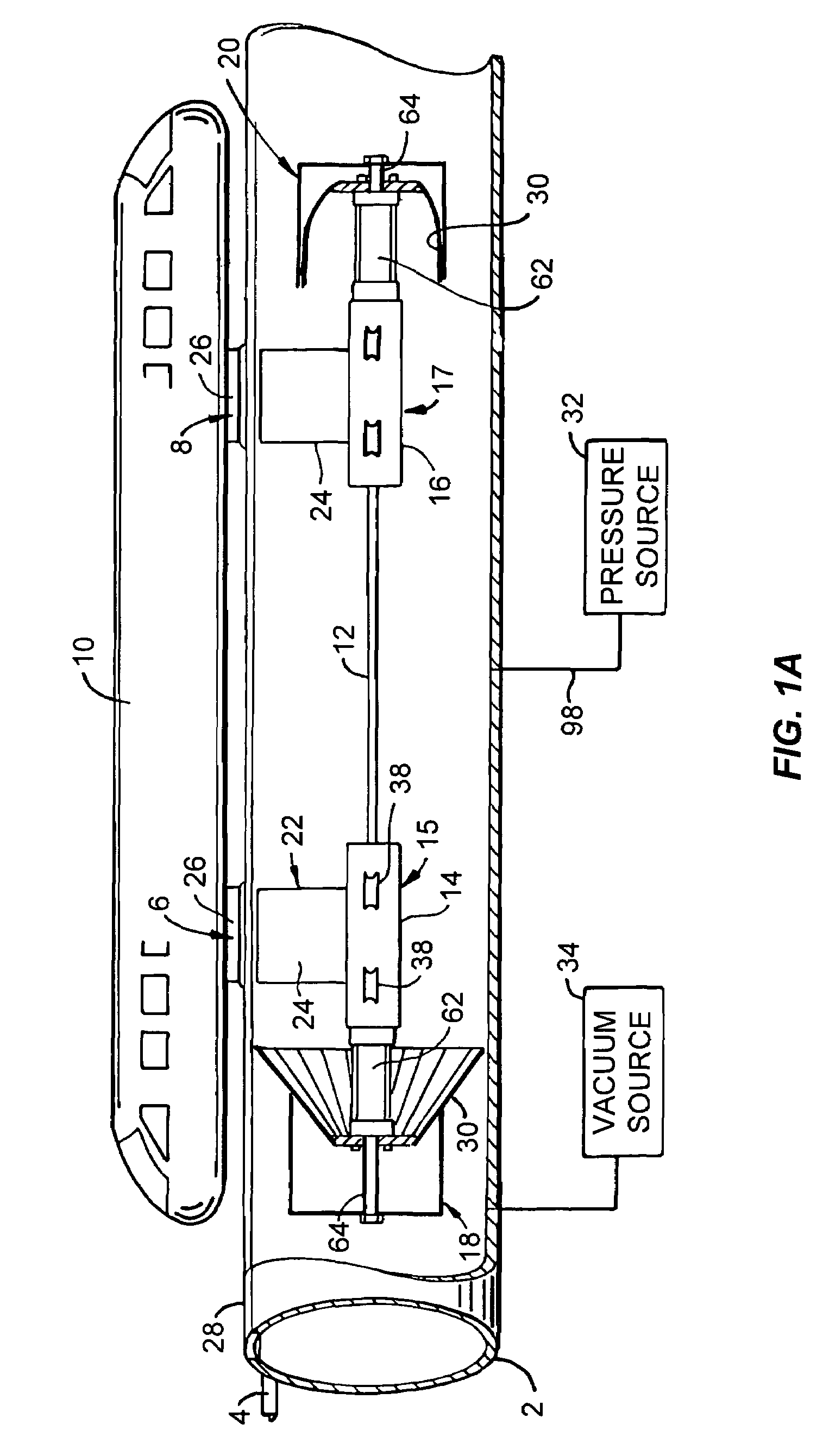Elevated rail transportation system
a rail transportation system and elevated technology, applied in transportation and packaging, propulsion railway systems, transportation and packaging, etc., can solve the problems of high construction and operation costs, insufficient versatility of light rail transportation systems, and inability to use rapid transit systems, so as to reduce wear and operation noise, eliminate differential speeds, and reduce the effect of nois
- Summary
- Abstract
- Description
- Claims
- Application Information
AI Technical Summary
Benefits of technology
Problems solved by technology
Method used
Image
Examples
Embodiment Construction
[0030]Referring first to FIG. 1A, a light rail transportation system constructed in accordance with the present invention includes an elongated power tube 2 which is suitably supported above ground, as is further described below. On its lateral sides proximate the top of the tube are a pair of parallel, spaced-apart angle tracks 4, the included angle of which faces outwardly relative to the power tube in the preferred embodiment of the invention, and which receive, support and guide wheels (not separately shown in FIG. 1A) carried on spaced-apart, e.g. forward and aft, undercarriages 6, 8, which in turn support, carry and guide a transportation vehicle 10 such as an illustrated passenger cabin or cargo wagon (not shown).
[0031]Inside the power tube and preferably aligned with the horizontal axis of the tube are opposing interior rails 12, in the form of elongated round bars attached to the power tube which extend over its length. First and second propulsion units 15, 17 are disposed ...
PUM
 Login to View More
Login to View More Abstract
Description
Claims
Application Information
 Login to View More
Login to View More - R&D
- Intellectual Property
- Life Sciences
- Materials
- Tech Scout
- Unparalleled Data Quality
- Higher Quality Content
- 60% Fewer Hallucinations
Browse by: Latest US Patents, China's latest patents, Technical Efficacy Thesaurus, Application Domain, Technology Topic, Popular Technical Reports.
© 2025 PatSnap. All rights reserved.Legal|Privacy policy|Modern Slavery Act Transparency Statement|Sitemap|About US| Contact US: help@patsnap.com



